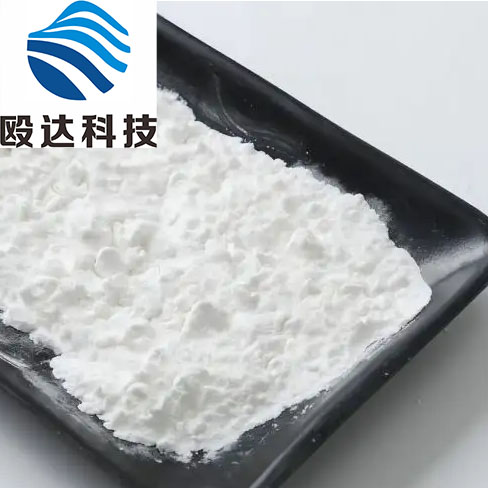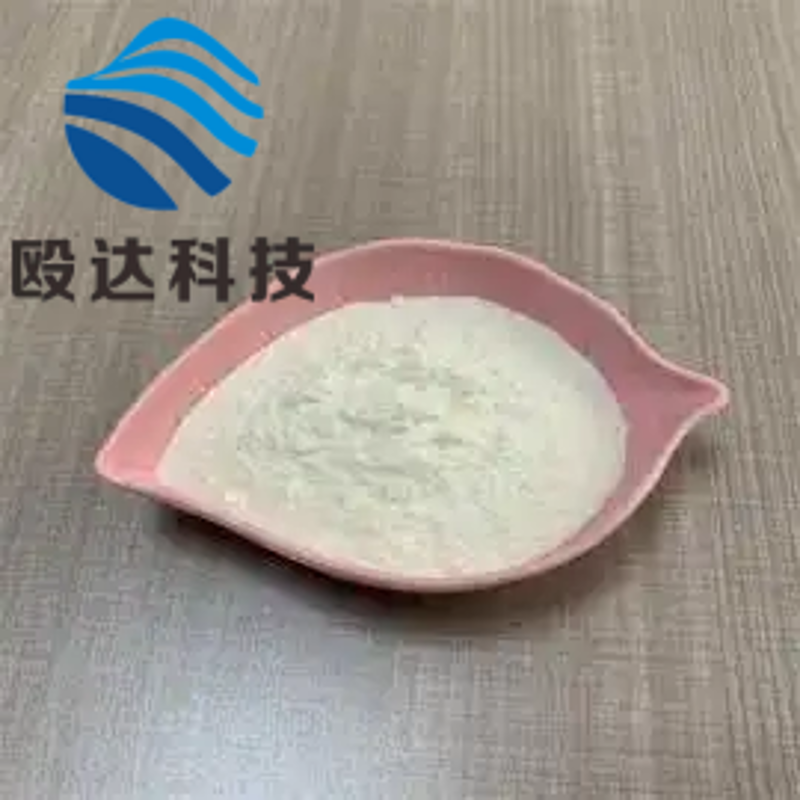-
Categories
-
Pharmaceutical Intermediates
-
Active Pharmaceutical Ingredients
-
Food Additives
- Industrial Coatings
- Agrochemicals
- Dyes and Pigments
- Surfactant
- Flavors and Fragrances
- Chemical Reagents
- Catalyst and Auxiliary
- Natural Products
- Inorganic Chemistry
-
Organic Chemistry
-
Biochemical Engineering
- Analytical Chemistry
- Cosmetic Ingredient
-
Pharmaceutical Intermediates
Promotion
ECHEMI Mall
Wholesale
Weekly Price
Exhibition
News
-
Trade Service
Yimaitong compiles and organizes, please do not reprint without authorization.
Introduction: Pre-diabetes and the new diagnosis of diabetes are the golden period of disease management-scientific intervention can achieve disease reversal to a certain extent (Related reading: Interview with Professor Dajin Zou: Wake up sleeping β cells-Diabetes reversal, seize the day).
However, the latest trends show that more than 13% of people aged ≥45 in my country suffer from diabetes, but the awareness rate is less than 40%, and the treatment rate is less than 50%.
"How to make the'iceberg hidden under the water' surface" may be a key consideration in the future diabetes prevention and control work.
Diabetes is one of the fastest growing chronic diseases in the world.
Understanding the prevalence of diabetes in my country and actively intervening on the risk factors leading to the high incidence of diabetes can delay the occurrence and progression of the disease and significantly reduce the risk of diabetes-related complications.
The overall control is of great significance.
To this end, the team of Dr.
Jue Liu from the Department of Epidemiology and Health Statistics of Peking University School of Public Health used data from the middle-aged and elderly people in my country (≥45 years old, 2015) to analyze the pre-diabetes, the prevalence of diabetes, and the awareness of diabetes.
, Treatment rate and control rate, demographics and physiological risk factors, etc.
, aim to provide more relevant data for improving the overall management of diabetes in the elderly in our community.
The research results were recently published in the journal Endocrinology Diabetes and Metabolism.
Research methods This study included 12,458 adult participants (≥45 years old, 2015) from the China Longitudinal Study of Health and Retirement.
The researchers used overall samples and sociodemographics to determine the prevalence of diabetes and prediabetes.
Estimate.
Using chi-square test and multivariate logistic regression analysis, the prevalence of diabetes, pre-diabetes prevalence, awareness rate, control rate and treatment rate were evaluated.
➤The definition of diabetes: 1.
Past diagnosis records; 2.
Fasting blood glucose> 7.
0 mmol/L and/or glycosylated hemoglobin (HbA1c)> 6.
5%.
➤Pre-diabetes definition: 6.
1 mmol/L<FPG<7.
0 mmol/L.
➤ Definition of awareness rate: the proportion of patients diagnosed by a doctor (self-report).
➤Treatment rate definition: the proportion of patients taking diabetes treatment drugs.
➤Control rate definition: Among diabetic patients receiving diabetes medication, the proportion of patients with HbA1c levels below 7.
0%.
The overall prevalence of diabetes is 13.
24%, 1/4 is the "reserve", the older the higher the proportion.
In this cohort, the overall prevalence of diabetes is 13.
21%, the "reserve" of diabetes-the overall pre-diabetes disease The rate was 25.
16%, and the above proportion increased significantly with age, and no obvious gender differences were found.
Diabetes: ➤45-55 years: the prevalence of diabetes is 12.
37%; ➤55-65 years: the prevalence of diabetes is 15.
98%; ➤>65 years: the prevalence of diabetes is 16.
52%.
Pre-diabetes: ➤45-55 years old: pre-diabetes prevalence rate is 21.
60%; ➤55-65 years old: pre-diabetes prevalence rate is 26.
45%; ➤>65 years old: pre-diabetes prevalence rate is 27.
29%.
Influencing factors of diabetes/pre-diabetes-place of residence, obesity, high blood pressure.
.
.
1.
Living area is closely related to the prevalence rate.
Respondents living in urban areas have higher prevalence rates of diabetes and pre-diabetes than living in rural areas Of respondents: ➤The prevalence of diabetes: 19.
04% vs.
12.
85%, P<0.
001; ➤The prevalence of diabetes: 27.
56% vs.
24.
02%, P<0.
001.
2.
The weight is closely related to the prevalence.
The weight is closely related to the prevalence: ➤BMI<18.
5kg/m^2 group: the prevalence of diabetes is 11.
11%, and the prevalence of prediabetes is 22.
25%; ➤BMI 18.
5-24kg /m^2 group: the prevalence of diabetes was 8.
18%, the pre-diabetes prevalence rate was 17.
81%; ➤BMI 24-28kg/m^2 group: the prevalence of diabetes was 17.
05%, the pre-diabetes prevalence rate was 28.
43% ➤BMI≥28kg/m^2 group: the prevalence of diabetes was 22.
54%, and the prevalence of prediabetes was 30.
07%.
Table 1 Diabetes and pre-diabetes incidence rate is hidden under the water surface-60% of patients are unaware of their disease, and the treatment rate is only half.
➤ Awareness rate: Among diabetic patients, only 39.
29% know their condition, compared with 35.
77 for men.
%, 42.
44% for women.
➤Treatment rate: Among all patients who realize that they have diabetes, only 47.
04% received hypoglycemic therapy, 43.
45% for men and 50.
19% for women.
➤Control rate: Among the diabetic patients receiving treatment, 59.
22% of the HbA1c levels were controlled below 7.
0%, the proportion of men was 61.
44%, and the proportion of women was 57.
25%.
Table 2 The awareness rate, treatment rate and control rate of diabetic patients with different characteristics.
Key factors affect the awareness rate, treatment rate and control rate.
The improvement needs to start from these aspects.
The analysis results show: ➤Obesity, history of hypertension, history of coronary heart disease, inactivity It is an important influencing factor leading to low diabetes awareness; ➤History of hypertension, coronary heart disease, low scores of activities of daily living, and lower limb function limitations are significantly related to low diabetes treatment rates; ➤Living in the city, lower limb function limitations, overweight, A history of coronary heart disease is an important factor in the low rate of diabetes control.
The prevalence of diabetes in my country is still significantly higher than the world average.
Diabetes prevention and treatment work has a long way to go.
In 2000, the prevalence of diabetes in all age groups in the world was 2.
8%, and this figure is expected to increase to 4.
4% in 2030.
my country is one of the countries with the highest prevalence of diabetes in Asia.
The prevalence of diabetes in adults aged 18 and over is 11.
6%, the prevalence of diabetes in people aged 45 and over is 13.
21%, and the pre-diabetes prevalence is 25.
16%.
Compared with studies in other countries/regions (Canada 7.
5%; Lebanon 7.
95%; Russia 3.
12%, etc.
), the prevalence of diabetes in my country is significantly higher, and it is urgent to solve the potential epidemic of diabetes-related complications.
Summary of this article In summary, this nationwide survey of diabetes shows (the time of enrollment of subjects in 2015): Among people aged 45 and over in my country, the overall prevalence rate of diabetes is as high as 13.
21%, the awareness rate is less than 40%, and the treatment rate Less than 50%, the treatment control rate is only 60%, and more than a quarter of people are in a pre-diabetic state.
This item of data always reminds medical workers that diabetes prevention and treatment work has a long way to go.
Yimaitong compiled and compiled from: Anying Bai, Jing Tao, Liyuan Tao, et al.
Prevalence and risk factors of diabetes among adults aged 45 years or older in China: A national cross-sectional study[J].
Endocrinology Diabetes and Metabolism.
2021.







